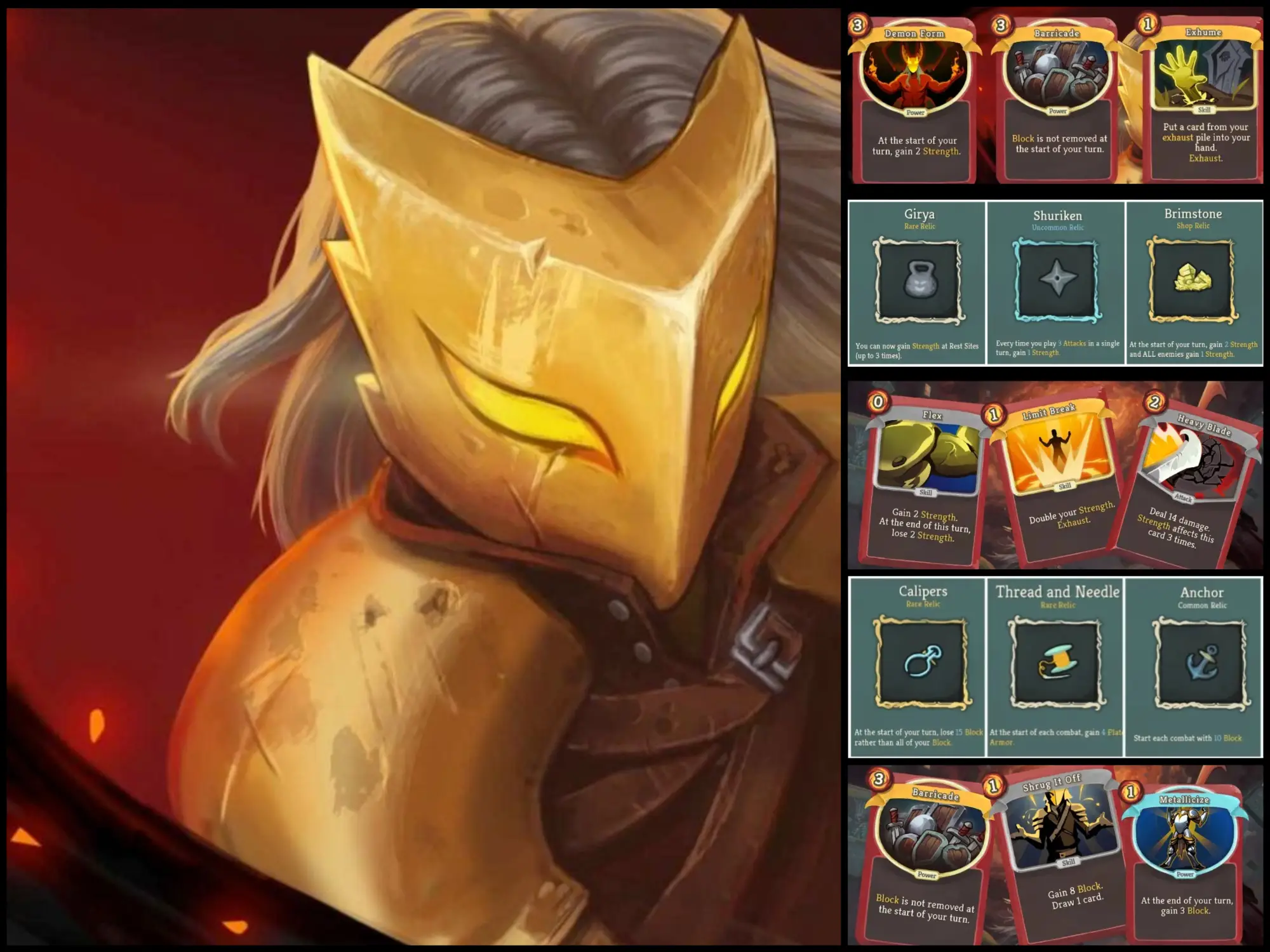
Ironclad is probably the most recognizable Slay the Spire character. With plenty of scaling and healing opportunities, the demon warrior is the most beginner-friendly of all characters. However, it can be tricky to truly take his playstyle to the next level – we’re here to help!
In this guide, we’ll go through both popular and niche Slay the Spire Ironclad Builds and give you some invaluable tips to elevate your STS gameplay. In case you have just started the game, you can check our Slay the Spire beginners guide. That said, let’s dive right in!
Slay the Spire Ironclad Builds Overview
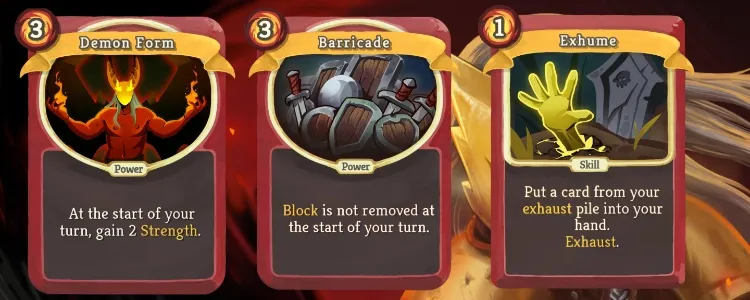
Just to give a little context – since Slay the Spire is a roguelike, there is some RNG involved in the gameplay. As a result, it’s not a good idea to start a run and try to force a build. A better approach is to take into account the relics and cards you’re offered and do your best to create a well-rounded deck.
Most popular builds are strength, block, exhaust, and hybrids. Let’s discuss them in more detail so you know which cards to keep on the lookout for each of these builds. In the end, we’ll also check out some niche Ironclad builds that STS players like to run.
Strength Build

Building a strength focused deck as the Ironclad is the preferred option for players with an aggressive playstyle. By increasing your strength, you increase the damage dealt to enemies – allowing you to quickly scale out of control.
Key Cards
There are multiple ways to scale strength in STS. Some of the key strength gain cards are Spot Weakness, Inflame, and Demon Form. Keep in mind, although Demon Form is extremely powerful, it tends to be slow and work better on bosses instead of hallway fights.
Naturally, you want to look for a strong payout for all the strength gain when it comes to attacks. Great attacks for this build are multi-hit, such as Sword Boomerang, Pummel, and Whirlwind for AOE (when there is more than one enemy in the fight). Special mention to Heavy Blade that directly scales with strength.
Finally, there is a card that’s almost a must take with this type of build – Limit Break. An upgraded Limit Break doesn’t exhaust, which means you can draw it more than once. Pair it with good deck manipulation (more draw, a tight deck, maybe throw in a Headbutt) and you’ll take enemies down in no time.
Synergistic Relics
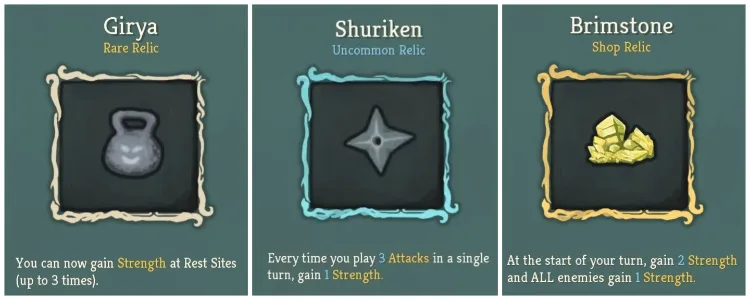
There are multiple relics that synergize well with a strength build, though most of them aren’t game-breaking and shouldn’t be played around. However, some relics can define your entire run, like Girya, Shuriken, and Brimstone.
Girya allows you to gain strength at a campfire for a maximum of 3. Paired with one or more Limit Breaks, Girya can be a great foundation for a strong build. The con of Girya is that it takes away three campfire rests/upgrades, which can risk your run in the long-term.
Getting an early Shuriken can be a game changer since it scales with the number of attacks you do. It goes great with Anger and other low-cost attacks. Pair it with extra draw and you can trigger Shuriken multiple times per turn, providing great scaling.
Brimstone is a very interesting relic that can only be bought in the shop (you can’t get it through an event or as a reward for defeating an elite enemy). It gives you two strength per turn, but there’s a catch – all enemies get one strength at the beginning of theirs! Brimstone runs can be difficult to maneuver, but they’re very satisfying to pull off.
Special Mention: Self-Inflicting Build
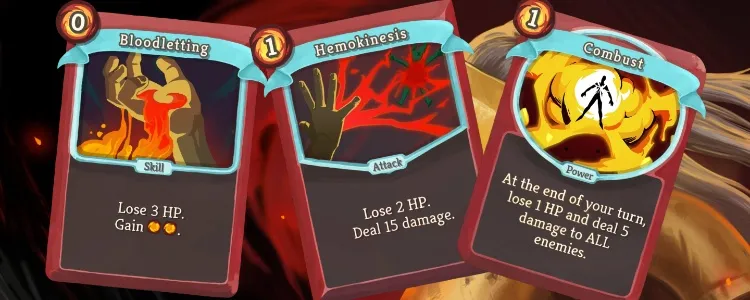
A self-inflicting build requires its own little mention. It’s built around cards that damage your HP when played, think Bloodletting or Hemokinesis. Rupture is crucial for this build as it gives you scaling – when you play a card that harms you, you gain strength.
Other cards that pair well with this build are Combust for AOE, Brutality for extra draw, and J.A.X. for even more strength scaling. Pro tip: Pain is incredibly strong here and might be worth keeping even at the cost of HP.
For a self-inflicting build, it’s important to have ways to heal back the HP loss, either by resting or by playing healing cards like Reaper. Also, keep in mind that there are antisynergistic relics for this build, namely:
- Tungsten Rod: Tungsten Rod reduces all damage taken by 1, which can stop some cards from triggering HP loss and therefore giving you strength.
- Buffer: Buffer prevents the first time you lose HP each fight. Not only will you waste the buffer to prevent a loss of just 1HP, but it also won’t provide any strength gain.
Block Build
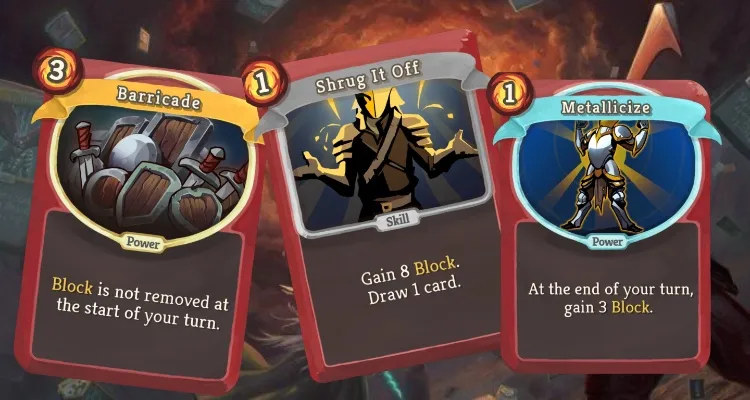
On the other hand, if you prefer a more defensive playstyle, maybe a block deck is more your speed. The premise is simple – you gain as much as block as possible, preventing enemies from damaging you while slowly reducing their health.
Key Cards
Maybe the most important card for an Ironclad block build is Barricade. Although it’s possible to create a good deck without it, Barricade is almost a must-have for this type of build. Entrench is another important card that speeds up your scaling.
Other great cards to take are Impervious, Juggernaut, and Metallicize.
So how do you kill enemies with a deck like this? Two words – Body Slam. Body Slam is the ultimate payoff for a block build and the main way to take down enemies and bosses. Luckily, it appears at a common level so you shouldn’t have a problem finding a few of them on your run.
Synergistic Relics
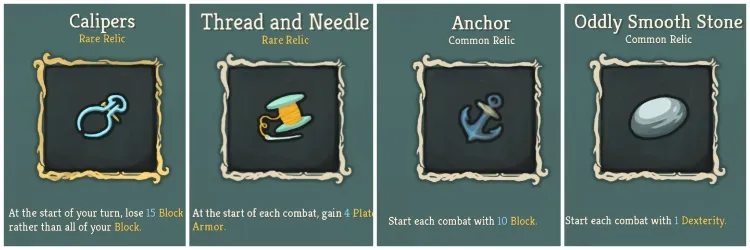
Calipers is a great relic for the Block build since it offers a similar effect to Barricade. If you find it early enough, you can build your run around it. Other relics that pair well are ones that give you block passively, such as Thread and Needle, Anchor, and Oddly Smooth Stone (increased dex).
Exhaust Build
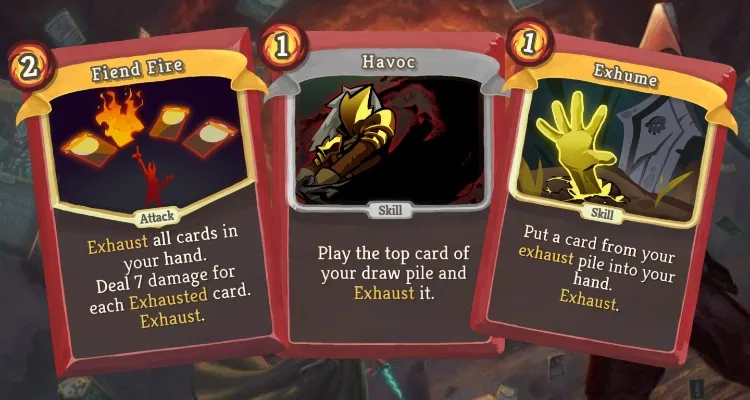
While Strength gain and Block scaling are fairly straightforward, an exhaust deck is slightly more advanced and a lot of beginners in Slay the Spire avoid this build. Before we see how you can pull off an exhaust build, let’s note – exhausting your cards is not a bad thing. Even in regular decks, exhausting bad cards makes your deck more consistent and allows you to draw your enablers faster.
That being said, it can be tricky to balance exhaust with draw, scaling, and damage dealing. Let’s see how it’s done.
Key Cards
Cards to look out for in an Ironclad Exhaust build include Feel No Pain for block, Dark Embrace for draw, and Fiend Fire for damage.True Grit is also a great option since it allows you to choose which card you want to remove from your hand.
Also, Corruption is a great enabler and can solve a lot of problems. However, it removes a lot of control you have over your deck since it exhausts all skills, so you don’t want to play it too early in longer fights or you risk cutting your deck down too quickly.
Add a Body Slam or two for a damage payout and you’re on your way to a win.
Synergistic Relics
Probably the most important relic for an exhaust deck is Dead Branch, which generates random cards every time you exhaust. It provides a self-sustaining build that counteracts a lot of issues exhaust decks have. Bonus: it’s great against enemies that add status cards to your deck.
Another helpful relic is Charon’s Ashes, which does damage to all enemies when you exhaust a card. The damage quickly adds up and the relic helps you with AOE, something that an exhaust build often lacks.
Bonus: Exhaust decks allow you to be more aggressive with events in the game, since you have ways to exhaust curse cards and prevent their negative effects from harming you.
Special Mention: Dead Branch + Corruption
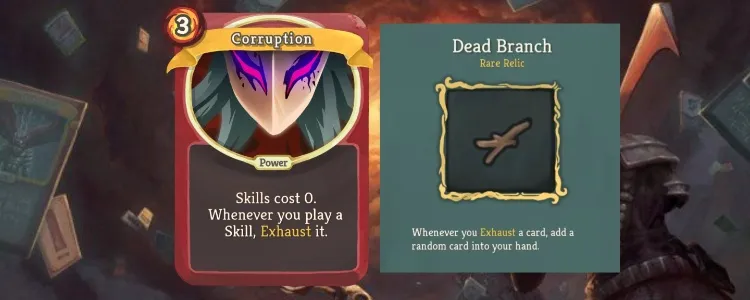
It felt necessary to specifically mention this broken combination. Maybe one of the most overpowered combos in the game, Dead Branch and Corruption allows you to keep playing, scaling, and exhausting cards to stomp every enemy in the game. It’s pretty much a guaranteed win even on A20, so if you get either of these – make sure to keep a close eye for the other.
Other Ironclad Builds
Now that we’ve discussed the most popular Slay the Spire Ironclad builds, let’s quickly go over some less-known ones, how to make them work and the pros and cons of each.
Hybrids
Technically all decks are hybrids, since you want a combo of attacks, skills, and powers in pretty much all runs. For example, you can create a combo of strength scaling with a lot of block generation. Or you can exhaust your bad attacks to increase blocks and deal damage in other ways.
The point is – don’t blindly stick to a synergy you’ve created in your head and play the run you’re dealt. Experiment with card combinations and you may be surprised by how well some cards work with each other, even if there’s no direct synergy.
Pros:
- Increased flexibility and adaptability
- Balanced offense and defense
Cons:
- Can be difficult to maneuver
- Not as consistent as a straightforward strategy
Going Infinite

All characters can create an infinite in Slay the Spire and the Ironclad is no exception. A deck that can be played “for infinity” is very difficult to pull off and requires a bit of luck. However, it’s extremely satisfying when it happens!
A more consistent way to try and get an infinite is to remove as many cards as possible in shops and events, use True Grit to exhaust all non-important cards in your deck until you’re left with 5 cards in your hand. One of those cards needs to be Dropkick, which can draw itself for infinite damage if the enemy is vulnerable.
Another possibility for an Ironclad infinite is Unceasing Top with a combination of Anger and other 0 cost cards. This deck requires you to remove ALL of your non-enablers and might require a few turns of setup. It gets much harder to pull off at Ascension 10, when you start every run with an unremovable curse that keeps Unceasing Top from triggering.
Pros:
- Very fun and rewarding type of deck
- Once set up, it’s easy to pilot
- Infinite damage potential
Cons:
- Gets hard-countered by some enemies and bosses
- Extremely difficult to pull off; requires the RNG to be in your favor
Searing Blow
Finally, we can’t talk about Slay the Spire Ironclad Builds without mentioning Searing Blow. Searing Blow is kind of a meme in the STS community, but surprisingly – it can be a winner, even on A20.
The strategy is straightforward – upgrade Searing Blow at EVERY. SINGLE. CAMPFIRE. If you want to make it work, you’re unlikely to rest or upgrade any other cards. Other cards to add to enable Searing Blow are Double Tap, Headbutt to bring it back and play it more often, and Armaments to upgrade it outside of campfires.
An insanely strong synergy is with Necronomicon, which you get from a question mark event. It plays a two-cost attack twice every turn, which means you can play your scaled Searing Blow multiple times for free. Ideally, by the time you reach the final boss, Searing Blow should deal over 100 damage.
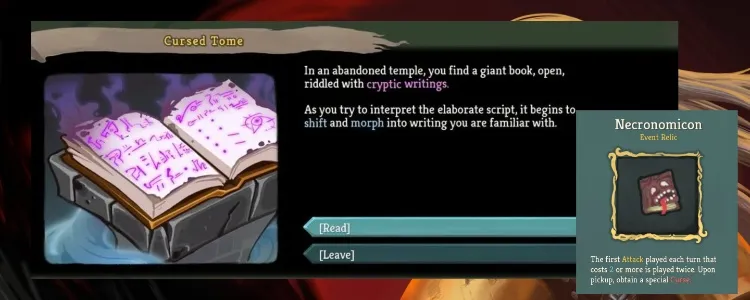
Pros:
- Very easy to build (just hit as many campfires as you can)
- Huge damage/scaling potential
- High consistency
- High single-target burst damage
Cons:
- Low/no AOE damage
- Requires a lot of investment
- Vulnerable to weakness
- Bad in the early/mid-game
Conclusion
To sum up, you can’t force a build in Slay the Spire due to RNG factors. However, you can keep an eye out for synergistic cards and relics, and in this guide we’ve discussed just that.
Whether you prefer an aggressive, defensive, or hybrid style of gameplay, we hope you’ll find some invaluable tips in our little guide. Remember – don’t be scared to experiment and have a little fun. The more you play, the better player you’ll become.
Photo Credits: Mega Crit Games
